In the realm of modern healthcare, diagnostic imaging has emerged as a revolutionary healthcare tool, that allows medical professionals to scan and visualize the human body with great clarity. Two key components of this imaging landscape are DICOM (Digital Imaging and Communications in Medicine) and PACS (Picture Archiving and Communication System). Both these technologies work hand in hand to revolutionize the way medical images are acquired, stored, and shared, ultimately enhancing patient care and diagnostic accuracy.
In this blog, let’s understand the DICOM and PACS focusing on their roles, differences, and the transformative impact they have on healthcare delivery.
Understanding DICOM: The Universal Language of Medical Imaging
DICOM, which stands for Digital Imaging and Communications in Medicine, serves as the universal language of medical imaging. It’s a standard that ensures seamless communication and compatibility among various medical imaging devices, regardless of their manufacturers. DICOM acts as a bridge, allowing different imaging modalities such as X-rays, MRIs, CT scans, and ultrasounds to speak a common language, making image sharing and interpretation across healthcare systems and facilities possible.

Key Features of DICOM
Standardization: DICOM defines a set of rules and protocols for formatting and exchanging medical images and associated information. This ensures consistency and interoperability among different imaging equipment and healthcare IT systems.
Security: DICOM incorporates security features to protect patient data and maintain the confidentiality and integrity of medical images during transmission and storage.
Metadata Inclusion: DICOM encompasses not only image data but also essential metadata, such as patient information, imaging parameters, and study details, facilitating accurate image interpretation and patient management.
Security: DICOM incorporates robust security features to protect patient data and maintain the confidentiality and integrity of medical images during transmission and storage.
Interoperability: DICOM enables the seamless exchange of medical images and information among various healthcare systems and facilities, ensuring that images from different sources can be viewed and interpreted uniformly.
Universal Language: It serves as the universal language of medical imaging, allowing different imaging modalities, such as X-rays, MRIs, CT scans, and ultrasounds, to communicate effectively, making image sharing and interpretation across healthcare systems and facilities possible.
Unlocking the Power of PACS: Streamlining Image Management
While DICOM server software ensures compatibility and consistency, PACS, or Picture Archiving and Communication System, focuses on the efficient storage, retrieval, and distribution of medical images within healthcare organizations. PACS replaces traditional film-based radiology with digital images, transforming how healthcare providers access and manage patient data.
Key Features of PACS
Centralized Storage: PACS eliminate the need for physical film archives by storing digital images in a centralized database. This not only saves physical space but also enables instant access to historical patient images.
Image Retrieval: Healthcare professionals can retrieve patient images swiftly through a user-friendly interface. This immediate access enhances diagnostic speed and accuracy.
Image Distribution: PACS software enables the secure and rapid sharing of medical images with authorized personnel, both within and outside the healthcare facility. This is especially crucial for consultations, second opinions, and remote diagnosis.
Integration: PACS seamlessly integrates with Electronic Health Records (EHR) systems, allowing healthcare providers to correlate medical images with patient data, enhancing overall patient care and clinical decision-making.

DICOM VS PACS
The table below provides a concise comparison between DICOM and PACS-
DICOM and PACS: A Symbiotic Relationship
DICOM and PACS are not competing technologies; instead, they complement each other in the medical imaging ecosystem. DICOM ensures that images are captured, stored, and transmitted in a standardized format, while PACS efficiently manages these images throughout their lifecycle.
For instance, when a medical image is acquired, DICOM ensures it adheres to the standardized format. The image is then transmitted to the PACS system, which stores it centrally, making it accessible to authorized healthcare professionals. When a physician needs to review a patient’s history, they can easily retrieve and view the images through the PACS app interface, thanks to DICOM’s standardization.
Conclusion
The synergy between DICOM and PACS is undeniable. Together, they empower healthcare professionals to harness the full potential of medical imaging, resulting in quicker and more accurate diagnoses, improved patient outcomes, and a more streamlined healthcare ecosystem. As technology continues to advance, the dynamic partnership between DICOM and PACS will undoubtedly remain at the forefront of modern medicine, shaping the future of healthcare delivery.
By understanding the nuances of DICOM and PACS, healthcare organizations can leverage these technologies to provide more efficient, precise, and patient-centred care, ultimately contributing to the betterment of global healthcare.
Learn how we can help you leverage DICOM and PACS technology. Connect to our QSS Technosoft top Healthcare IT experts now!
We are proud to mention that our work has been recognized by leading B2B reviews and research platforms like GoodFirms, Clutch, MirrorView, and many more.


DICOM vs. PACS: Understanding the Differences in Medical Imaging Solutions